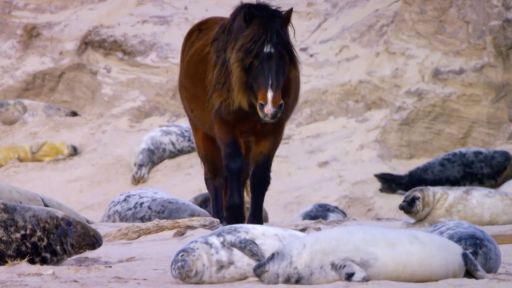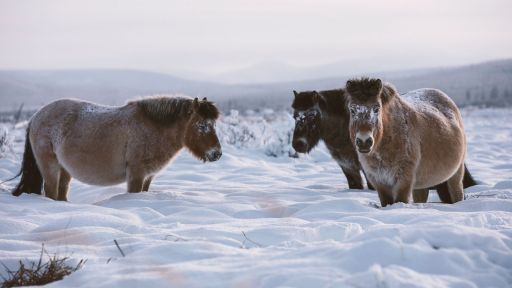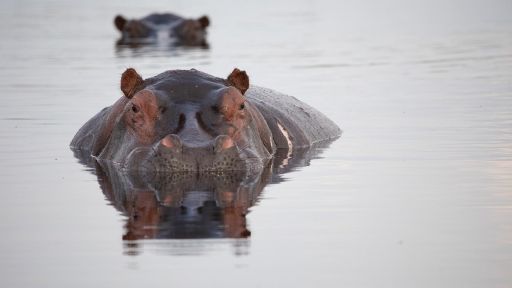PRODUCTION CREDITS: PART TWO
WRITTEN & DIRECTED BY
Niobe Thompson
EXECUTIVE PRODUCER
Caroline Underwood
PRODUCED BY
Niobe Thompson
LOCATION PRODUCER, KAZAKHSTAN & RUSSIA
Nurbol Baimukhanov
EDITORS
Brenda Terning
Krystal Moss
DIRECTORS OF PHOTOGRAPHY
Daron Donahue
Aaron Munson
MUSIC COMPOSED & CONDUCTED BY
Darren Fung
ASSOCIATE PRODUCER & PRODUCTION MANAGER
Sandra Tober
PRODUCTION COORDINATOR
Tamarra Canu
SOUND RECORDIST
Philip Dransfeld
AERIAL PHOTOGRAPHY
Charles Taylor
Gabrielle Nadeau
PHANTOM HIGH SPEED OPERATOR
Luke Campbell
ADDITIONAL CAMERA
Sergio Olivares
Niobe Thompson
Tamarra Canu
Sergei Shauchenka
Christina Ienna
GAFFER
Terry Sims (Head)
Mel Geary
GRIP
Larry Kelly (Key)
Anthony Goertz
Nevin Merrells
SOUND DESIGN AND MIX
Johnny Blerot
SOUND EDIT
Iain Pattison
James Murdoch
FOLEY
Chris Szott
Isael Huard
VOICE COACH
April Banigan
ORCHESTRATION & SCORE COORDINATION
Vincent L. Pratte
SCORE RECORDING ENGINEER
Jeremy Tusz
MUSIC PREPARATION
Stephanie Urquhart
Christopher Hawn
James Slainmann
ORIGINAL MUSIC PERFORMED BY
Members of the Edmonton Symphony Orchestra, Pro Coro Canada, and Booming Tree Taiko at the Francis Winspear Centre for Music
For the Edmonton Symphony Orchestra and the Francis Winspear Centre for Music:
EXECUTIVE DIRECTOR
Annemarie Petrov
ARTISTIC ADMINISTRATOR
Rob McAlear
FACILITIES COORDINATOR
Diana de Sousa
ORCHESTRA CONTRACTOR
Eric Filpula
For Pro Coro Canada:
ARTISTIC DIRECTOR
Michael Zaugg
EXECUTIVE DIRECTOR
Mireille Riiavec
SUPERVISING SCORE MIXERS
April Tucker CAS
James Clemens-Seely
SCORE MIXERS
Alex Bohn
Kseniya Degtyareva
Lilita Dunska
Esther Gadd
Joaquin Gomez
Mariana Hutten
Jonathan Kaspy
Aleksandra Landsmann
Matthew Manifould
Luisa Pinzon
MUSIC EDITOR
Derek Syverud
Score mixed at the Banff Centre for Arts and Creativity
COSTUME DESIGNERS
Zhannat Baimukhanova, Kazakhstan
Kari-Lynn Kleinwachter, Canada
Liza Xenzova, Canada
COSTUMERS
Zaure Aitbai
Zere Makhambet
Zhan Aldekov
PROSTHETICS AND MAKE-UP
Aliya Shmanova
Albina Rodygina
Luiza Amanbayeva
PROP ARTISTS
Seken Nurgaliev
Asylbek Tortkara
Daniyar Baidaralin
SET ARTIST
Alexey Shindin
CARPENTERS
Kairat Tasov
Eszhan Baltabai
Bolat Ertaev
Zeba Etaeva
Nurasyl Tasov
Arman Nurzhan
Beksultan Moldabekov
Erszhan Baltabaev
Daulet Nurmakhan
Ulan Sisenbaev
ARCHAEOLOGIST CONSULTANTS, DRAMATIC RECREATIONS
Professor Viktor Zaibert
Nurbol Baimukhanov
Gabit Baimbetov
Emma Usmanova
Professor Mayke Wagner
Professor Pavel Tarasov
ANIMAL WRANGLERS
Aldabergen Shalipov, Kazakhstan
Baltabai Ibraev, Kazakhstan
John Scott, Canada
CASTING DIRECTOR
Nurbol Baimukhanov
ACTORS:
HUNTER-GATHERERS, KAZAKHSTAN
Janat Daley
Aidynbek Beisenuly
Aigerim Beissembayeva
Zaure Aitbai
Zere Makhambet
Almas Ulan
BOTAI, KAZAKHSTAN
Yurii Matvienko
Timur Janyshev
Alla Stassyuk
Ilgizar Mavlyanov
Oksana Olenik
Milana Simonenko
Alexandra Belova
Kira Belova
Dariya Markina
Denis Markin
Artem Markin
Tatyana Laukert
Marina Burko
Nadezhda Chepenko
Tatyana Sklyar
Ruslan Aldazharov
Evdokim Artyushenko
Viktor Egozov
Evgenii Ostrovsky
Marina Egozova
Sergei Safiulin
Nikolay Simonenko
Andrei Mayer
MONGOLS, KAZAKHSTAN
Edii Moldaliev
Toichubek Serkebaev
Sultan Dikambaev
Temirkhan Tursungaliev
Aidos Iskakov
Ilchibek Nuraev
Nurbek Bolotov
STUNT MASTERS
Zhaidarbek Kunguzhinov, Kazakhstan
Timur Janyshev, Kazakhstan
Ruslan Podaruyev, Kazakhstan
Mike Loades, United Kingdom
COLOR GRADE & ONLINE MASTERS
Glenn Sakatch
VISUAL EFFECTS & ANIMATION DIRECTOR
Greg Marshall
3D ANIMATIONS
Ryder McLean
Karl “Nekosei” Reichert
STOCK FOOTAGE RESEARCH
Gina Cali
ACCOUNTING SERVICES
Candice Kent
PRODUCTION SOLICITOR
Linda Callaghan
STOCK FOOTAGE & ARCHIVAL MATERIAL
University College Dublin Research & Innovation
Getty Images
Shutterstock
Filmsupply
NatureFootage
NBC
National Geographic
The Calgary Stampede
Zatzworks Inc.
United Church Archives
SPECIAL THANKS
Sable Island National Park Reserve, Parks Canada
Whitemud Equine Learning Centre Association
HRH Princess Alia bint Al Hussein
The Calgary Stampede
Glebe House in Coolcullen, County Kilkenny
Ministry of Information and Communications of the Republic of Kazakhstan
Shejire DNA
State National Nature Park Burabay
State Historical-Cultural Reserve Museum Issyk
The British Museum
Musee departemental de Prehistoire de Solutré
Caverne du Pont D’Arc (Chauvet), Ardeche
Siksika First Nation
The horse community of Edmonton, Alberta
Produced with the assistance of the Government of Alberta, Alberta Media Fund
Produced with the participation of
The Canadian Film or Video Production Tax Credit
Produced with the cooperation of the
Canadian Federation of Musicians
Produced in association with
the Canadian Broadcasting Corporation
Executive in Charge of Production for CBC
Sue Dando
For NATURE
Series Editor
JANET HESS
Senior Producer
LAURA METZGER LYNCH
Coordinating Producer
JAYNE JUN
Associate Producer
JAMES F. BURKE
Legal Counsel
BLANCHE ROBERTSON
Digital Producer
HEATHER TONER
Social Media Editor
KAREN HO
Audience Engagement
CHELSEY SAATKAMP
Budget Controller
JAYNE LISI
Online Editor
STACEY DOUGLASS MOVERLEY
Re-Recording Mixer
JON BERMAN
Original Funding Provided in Part by
Canada Media Fund
Rogers Documentary Fund
The Arnhold Family In Memory Of Clarisse Arnhold
Sue and Edgar Wachenheim III
Kate W. Cassidy Foundation
Lillian Goldman Charitable Trust
Kathy Chiao and Ken Hao
Anderson Family Fund
Filomen M. D’Agostino Foundation
Rosalind P. Walter
The Halmi Family in memory of Robert Halmi, Sr.
Sandra Atlas Bass
The Hite Foundation
Corporation for Public Broadcasting
Series Producer
BILL MURPHY
Executive Producer
FRED KAUFMAN
A production of HANDFUL OF FILMS in association with THIRTEEN Productions LLC and WNET
This program was produced by THIRTEEN Productions LLC, which is solely responsible for its content
© Handful of Films 2018
Additional material ©2019 THIRTEEN PRODUCTIONS LLC
All Rights Reserved








